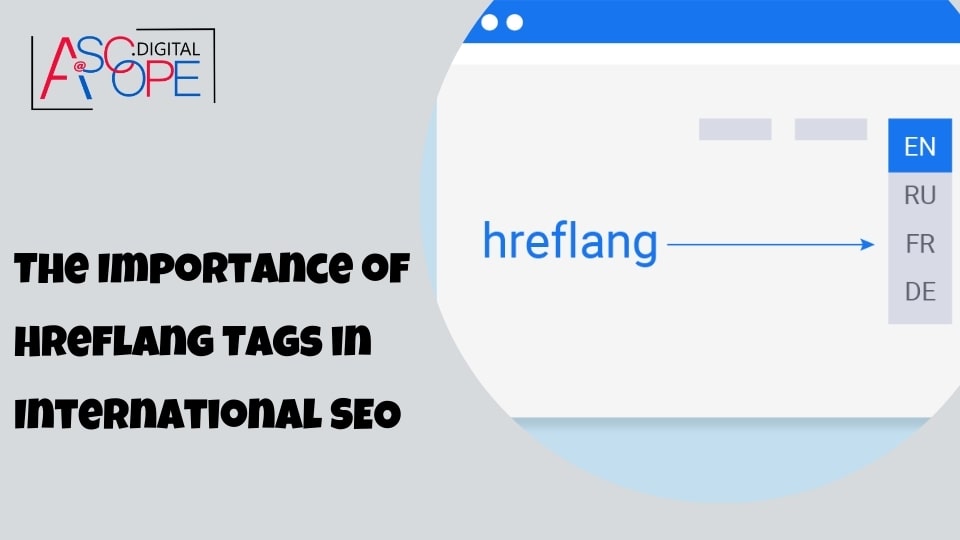In the dynamic world of SEO, businesses are continually looking for ways to expand their reach and improve their visibility on a global scale. International SEO is the process of optimizing your website so that search engines can easily identify which countries you want to target and which languages you use for business. One crucial component of international SEO is the implementation of hreflang tags. Hreflang tags play a vital role in ensuring that your content reaches the right audience in their preferred language, thereby enhancing user experience and boosting your site’s performance in international markets. This article delves into the importance of hreflang tags in international SEO and how they can help your business grow.
Understanding Hreflang Tags
Hreflang tags are HTML attributes used to specify the language and geographical targeting of a webpage. They help search engines understand the relationship between pages in different languages or regions, ensuring that users are directed to the version of the page that best suits their language and location. By implementing hreflang tags, you can avoid issues such as duplicate content, where multiple versions of the same page might be indexed separately, and ensure that your audience gets the most relevant version of your content.
Enhancing User Experience
One of the primary benefits of hreflang tags is their ability to enhance user experience. When users search for information, they prefer content in their native language. Hreflang tags ensure that users are directed to the correct language version of your website, providing a seamless browsing experience. For example, a Spanish-speaking user in Spain will be directed to the Spanish version of your site, while a French-speaking user in France will see the French version. This localization not only improves user satisfaction but also increases the likelihood of engagement, as users are more likely to interact with content they can easily understand.
Avoiding Duplicate Content Issues
Search engines, particularly Google, strive to provide users with the most relevant results. When a website has multiple versions of the same page in different languages, it can be challenging for search engines to determine which version to show to users. This can lead to duplicate content issues, where search engines might index multiple versions of the same content, diluting your SEO efforts. Hreflang tags solve this problem by clearly indicating to search engines which version of the page to display for users in specific regions or languages. Thus, improving traffic and sales for your website. Read more on the other reasons why your website isn’t getting traffic.
Increasing Click-Through Rates (CTR)

By directing users to the appropriate language version of your site, hreflang tags can significantly increase click-through rates (CTR). When users see search results in their native language, they are more likely to click on those results. A higher CTR indicates to search engines that your content is relevant and valuable to users, which can positively impact your rankings. Over time, this increased engagement can lead to higher visibility in search results, driving more organic traffic to your site.
Boosting Conversion Rates
Localized content is not only more engaging but also more effective in driving conversions. When users find content in their native language, they are more likely to trust the information and feel confident in making a purchase or taking another desired action. Hreflang tags ensure that users land on the most relevant version of your site, which can significantly boost conversion rates. Whether you’re selling products, services, or simply looking to increase newsletter sign-ups, localized content tailored to the user’s language and region can make a substantial difference in your conversion metrics.
Supporting Regional SEO Strategies
Different regions may have varying search behaviors and preferences. Hreflang tags allow you to tailor your SEO strategy to meet the specific needs of different markets. For instance, you can optimize content for specific keywords that are more popular in one region compared to another. By creating region-specific content and using hreflang tags to direct users to the right version, you can ensure that your SEO efforts are more targeted and effective, ultimately leading to better performance in international search results.
Facilitating Effective Marketing Campaigns
Hreflang tags are essential for executing effective international marketing campaigns. When launching a campaign, it’s crucial to ensure that your target audience sees the most relevant content. For example, a holiday promotion in the United States might be different from one in Japan due to cultural differences and shopping habits. Hreflang tags help you direct users to the appropriate version of your promotional content, ensuring that your marketing messages are accurately conveyed and well-received by the intended audience.
Improving Overall SEO Performance
Implementing hreflang tags as part of your international SEO strategy can lead to an overall improvement in your site’s SEO performance. By providing a better user experience, avoiding duplicate content issues, and increasing engagement through localized content, you signal to search engines that your site is high-quality and relevant. This can result in higher rankings, more organic traffic, and ultimately, better business outcomes.
Case Studies and Success Stories

Numerous businesses have successfully leveraged hreflang tags to enhance their international SEO efforts. For example, a multinational e-commerce company implemented hreflang tags across its various language versions and saw a significant increase in organic traffic from international markets. Similarly, a global tech firm used hreflang tags to direct users to localized content, resulting in higher engagement rates and improved conversion metrics. These success stories highlight the tangible benefits of using hreflang tags to optimize for international SEO.
Best Practices for Implementing Hreflang Tags
To effectively use hreflang tags, it’s important to follow best practices:
- Correct Syntax: Ensure that hreflang tags are correctly implemented in the HTML of each page. The syntax should be precise to avoid errors that could confuse search engines.
- Consistency: Implement hreflang tags consistently across all language versions of your site. Each version should reference all other versions to create a comprehensive hreflang structure.
- Use of Language Codes: Use the correct language codes (e.g., en for English, es for Spanish) and, if necessary, include regional codes (e.g., en-us for English in the United States, en-gb for English in the United Kingdom).
- Testing and Validation: Regularly test and validate your hreflang tags using tools like Google’s Search Console. This helps identify and fix any issues that might arise.
- Sitemap Inclusion: Consider including hreflang tags in your XML sitemaps to ensure that search engines can easily discover and understand the language and regional targeting of your pages.
Challenges and Solutions
While hreflang tags are powerful, they can also present challenges. Implementing them correctly requires technical expertise and a thorough understanding of your site’s structure. Common issues include incorrect syntax, inconsistent tagging, and failure to account for all language versions. To overcome these challenges, it’s advisable to work with experienced SEO professionals or use automated tools that can help manage and validate your hreflang tags.
Conclusion
Hreflang tags are a critical component of international SEO, offering numerous benefits that can help your business thrive in global markets. By enhancing user experience, avoiding duplicate content issues, increasing CTR and conversion rates, and supporting regional SEO strategies, hreflang tags ensure that your content reaches the right audience in their preferred language. As you expand your business internationally, implementing hreflang tags should be a top priority to maximize your SEO efforts and achieve long-term success. Thus, improving traffic and sales for your website. Read more on the other reasons why your website isn’t getting traffic. Embracing the power of hreflang tags can significantly enhance your international SEO strategy, driving more traffic and conversions, and establishing your brand as a global player in your industry.


